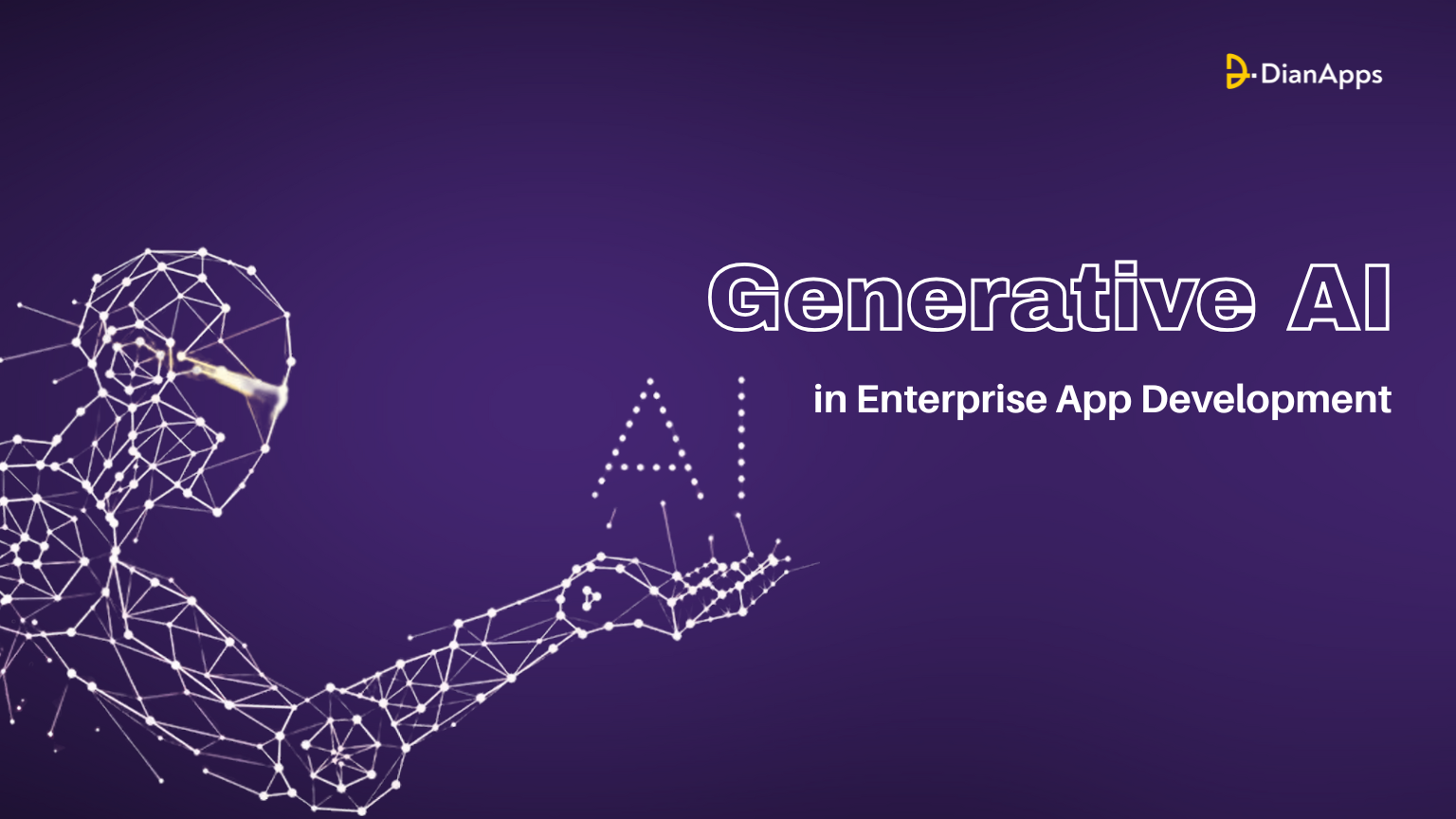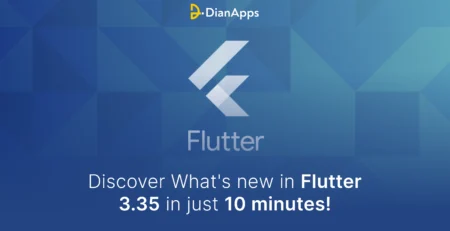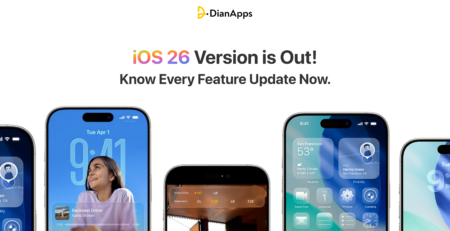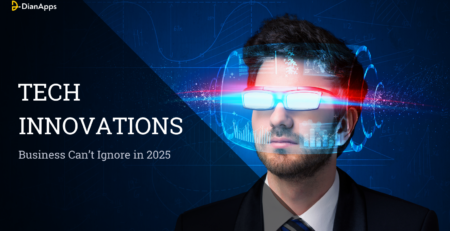Generative AI in Enterprise App Development
Generative AI has radically transformed the way we visualize, generate, and interact with content, be it text, images, video, or code. What once required human creativity and manual execution is now being augmented and, in some cases, led by intelligent systems trained on vast datasets.
Today, 71% of enterprises report using generative AI in at least one core business operation, marking a new era of digital productivity and innovation. This AI subfield has quickly become the most recognized in the enterprise tech stack, not just because of its creative potential, but due to its measurable business impact.
Recent studies reveal a deepening reliance on GenAI in the U.S:
- 47% of executives believe it significantly boosts workforce productivity
- 40% are leveraging it for content generation across marketing, training, and communications
- 31% cite its importance in improving customer interaction and analysis
But beyond these numbers lies an even bigger story: how generative AI is revolutionizing enterprise app development.
From streamlining software architecture to writing production-ready code and building autonomous agents that manage business workflows, Generative AI is no longer a future concept. It’s here, shaping the way enterprise apps are imagined, built, deployed, and scaled.
This blog dives deep into:
- Strategic enterprise use cases
- Real-world implementations
- The evolving AI technology stack
- Risks, governance, and best practices
- And what the future holds for GenAI-powered application ecosystems
Let’s unpack how this technological shift is unlocking faster time-to-market, enhanced decision-making, and developer productivity at a scale previously unimaginable.
The Challenges Faced By Enterprises Before the Rise of Generative AI
Before generative AI began reshaping the digital landscape, enterprises encountered a long-standing set of roadblocks that hindered agility, innovation, and efficiency in app development. These challenges weren’t just technical, they were structural, cultural, and strategic.
1. Prolonged Development Timelines
Enterprise app development often follows rigid, linear processes. With multiple approval layers and department dependencies, releasing new features or products could take several months, or even years.
2. Shortage of Skilled Developers
The demand for experienced developers, architects, and DevOps engineers far exceeded the supply. Many organizations struggled to scale their teams, resulting in overburdened resources and delayed rollouts.
3. Disconnect Between Business Goals and Technical Execution
Bridging the gap between what leadership envisions and what engineering teams deliver has always been complex. Misinterpreted requirements and siloed teams led to subpar apps that missed the mark.
4. Legacy Systems Slowing Innovation
Most large enterprises rely on legacy infrastructures, monolithic systems that are difficult to modernize, integrate, or retire. These systems act as innovation blockers, limiting adaptability and speed.
5. Repetitive and Low-Value Development Work
Developers often spent an inordinate amount of time writing boilerplate code, maintaining outdated modules, or fixing recurring bugs, leaving little room for creative problem-solving or user-focused innovation.
6. Manual Testing and QA Bottlenecks
Testing processes were heavily manual and resource-intensive. Even with automation in place, ensuring quality at scale required dedicated QA teams, slowing down continuous deployment efforts. Enrolling in an automation testing course can help professionals tackle these challenges more effectively by mastering tools and frameworks that streamline such processes.
7. Limited Personalization and Real-Time Insights
Enterprise applications traditionally lacked the intelligence to adapt based on user behavior or contextual needs. Delivering personalized experiences at scale was either extremely complex or not prioritized at all.
8. Slow Feature Rollouts and Experimentation
Due to complex deployment environments and risk-averse cultures, pushing new features live was a high-stakes affair. As a result, many enterprises fell behind more agile competitors in the market.
These longstanding barriers created a pressing need for intelligent, scalable, and creative solutions, paving the way for Generative AI to enter the enterprise space not just as a trend, but as a game-changing catalyst.
Let’s read about the limitations of using AI for app development.
Enter Generative AI that Started Resolving Enterprise Challenges Like a Pro!
- Accelerates development timelines by auto-generating code snippets, UI components, and backend logic, significantly reducing time from idea to deployment.
- Bridges the talent gap by augmenting developer productivity, allowing smaller teams to accomplish more without compromising quality.
- Improves alignment between business and tech teams through natural language processing tools that translate business requirements into functional specifications or wireframes.
- Modernizes legacy systems by enabling faster code refactoring, intelligent documentation, and smoother integration of old systems into new cloud-native environments.
- Eliminates repetitive coding tasks by generating boilerplate code, writing unit tests, and suggesting fixes for bugs, freeing developers to focus on complex problem-solving.
- Speeds up QA processes by generating test cases automatically and identifying edge-case bugs early in the cycle through predictive testing models.
- Enables personalized user experiences with dynamic content generation and AI-driven insights that adapt the app’s behavior in real time based on user data.
- Supports faster feature experimentation by simulating user interactions, automating A/B test content, and helping teams predict performance before launch.
- Drives better decision-making by integrating with enterprise data systems and generating actionable insights, dashboards, or strategy recommendations directly within apps.
- Fuels continuous innovation by acting as a 24/7 co-pilot for developers, product managers, and designers, constantly suggesting optimizations and new ideas.
Strategic Use Cases of Generative AI in Enterprise App Development
According to IBM’s 2024 Global AI Adoption Index, 42% of enterprise leaders have already implemented Generative AI to solve mission-critical challenges, while another 40% are actively exploring where it fits into their development roadmap.
This shift is driven by the tangible outcomes GenAI delivers: faster development cycles, smarter automation, cost savings, and higher-quality digital experiences.
Enterprises are using GenAI not just to improve productivity, but to reimagine how enterprise apps are conceptualized, built, and scaled.
Below are the most strategically valuable and commonly adopted use cases where GenAI is unlocking measurable business impact.
1. AI-Powered Code Generation and Refactoring
GenAI tools like GitHub Copilot, Amazon CodeWhisperer, and Tabnine assist developers in writing clean, production-ready code faster. They suggest functions, generate boilerplate, and even help refactor legacy systems, accelerating development and reducing human error.
Also read: ChatGPT vs Copilot: which and when to use!
2. Automated Business Logic Modeling
GenAI can convert business rules and requirements (written in natural language) into backend workflows or logic diagrams. This bridges the gap between product owners and developers, speeding up sprint cycles and improving accuracy.
3. Enterprise Chatbots & Virtual Agents
Customer service and HR apps now integrate LLM-powered chatbots capable of intelligent conversations. These bots handle queries, process data, and even execute tasks (e.g., updating records), improving support quality while reducing operational costs.
4. Smart UI/UX Generation
From generating component libraries to drafting layout ideas based on user flows, GenAI enhances UI/UX tools to support designers in creating intuitive and responsive interfaces tailored to enterprise users, faster than traditional wireframing or prototyping tools.
5. Automated Testing & Bug Resolution
GenAI enhances quality assurance by writing unit and integration test cases, identifying potential code issues, and recommending fixes. Tools like CodiumAI and Testim improve test coverage and reduce QA cycles.
6. Contextual Documentation and Knowledge Bases
Instead of manually writing API docs or technical specs, GenAI can generate live, dynamic documentation from codebases or product updates. This ensures better onboarding and knowledge sharing across large, distributed teams.
7. Advanced Data Analysis & Decision Intelligence
Enterprise apps now embed GenAI-driven insights, from predictive analytics to natural language summaries of complex datasets. This empowers non-technical users (e.g., sales, finance) to derive actionable insights without depending on BI teams.
8. Personalized In-App Experiences
GenAI can generate tailored content product recommendations, dynamic pricing, or even custom dashboards, based on user behavior, industry type, or business logic. This deep personalization drives engagement and customer satisfaction.
9. Compliance Monitoring & Document Generation
In regulated industries (finance, healthcare, law), GenAI can generate contracts, reports, or policy documents that meet legal standards, flagging compliance issues in real time, saving both time and legal risks.
Read how Generative AI is transforming commercial real estate in 2025!
10. Multilingual Support & Globalization
Generative AI breaks language barriers in global enterprise apps by generating localized content, translating documents with context awareness, and ensuring cultural nuance, accelerating market expansion strategies.
This strategic approach of GenAI has been applied by many popular tech giants such as IBM, Salesforce, Microsoft, Amazon, etc. Let’s look at how these strategies evolved their business operations.
Real-World Enterprise Examples Using Generative AI’s Complete Capabilities
IBM: Building Smarter Enterprise Applications with Watsonx.ai

IBM has been at the forefront of enterprise AI adoption. Through its Watsonx.ai platform, the company helps businesses generate code, automate document creation, and embed intelligent chat agents into apps.
According to IBM’s own report, their clients have seen up to 30% reduction in development time when applying generative AI across software lifecycles, from design to testing.
Accenture: Transforming Client Platforms Across Industries

Accenture has integrated GenAI into over 1,500 client engagements across finance, retail, healthcare, and manufacturing.
Their AI Navigator for Enterprise platform helps organizations ideate, build, and optimize GenAI models for use in app development and digital transformation.
In fact, Accenture estimates that generative AI will improve client productivity by 40% over the next three years when integrated into their app ecosystems.
Salesforce: Elevating CRM with Einstein GPT

Salesforce’s Einstein GPT is a prime example of how GenAI is powering next-gen CRM apps. It enables sales, marketing, and support teams to auto-generate customer emails, reports, and responses, right within the Salesforce platform.
The result? Businesses are experiencing a 25% increase in customer interaction efficiency, while developers benefit from faster component generation and smarter workflow design.
Microsoft: AI Copilot Across Developer and Business Workflows

Microsoft has embedded GenAI across its ecosystem, from GitHub Copilot for developers to Dynamics 365 Copilot for business users.
GitHub Copilot alone has cut down coding time by up to 55%, and business units using Copilot in Microsoft apps have reported faster decision-making and smarter process automation.
Deloitte: Automating Tax, Legal, and Compliance Apps

Deloitte uses GenAI to build intelligent document generators, compliance bots, and contract analyzers for enterprise-grade legal and finance apps.
Their AI solutions can process complex documents and deliver summaries with near-human accuracy, saving up to 60% of manual effort in auditing and compliance workflows.
Amazon: Accelerating Developer Productivity with CodeWhisperer

Amazon Web Services (AWS) introduced CodeWhisperer, an AI pair programmer that generates real-time code suggestions and security scans for enterprise app developers. Early adopters reported a 27% increase in development velocity and fewer vulnerabilities at deployment.
Adobe: Content Generation for Enterprise Marketing Apps

Through Adobe Firefly, Adobe is enabling marketing teams to auto-generate creative content (images, banners, videos) directly from text prompts. Enterprise marketing apps are now powered by AI-driven asset generation, cutting down production cycles by weeks.
These examples showcase that generative AI isn’t a niche experiment, it’s a mainstream accelerator transforming how enterprises ideate, build, and evolve digital applications.
Comprehensive Guide to Implementing Generative AI in Enterprise App Development
Integrating Generative AI into enterprise app development isn’t about plugging in a chatbot or adding automation, it’s a structured, strategic shift in how digital solutions are built and scaled.
Here’s a step-by-step framework for implementation, complete with the tech stack and tools that enable it at each layer of the enterprise application architecture.
1. Define Use Cases & Success Metrics
Start by identifying high-impact areas: repetitive coding, customer interaction, document generation, testing, or analytics. Align them with KPIs like time-to-market, error reduction, or user engagement uplift.
Tools/Partners to Consider:
- IBM Watsonx.ai for enterprise-grade strategy planning
- Accenture AI Navigator for roadmap creation
- Dataiku or Azure AI Studio for exploratory prototyping
2. Select a Generative AI Model/Foundation Model
Choose a foundational model (LLM or multimodal) based on your app’s goal, compliance requirements, and deployment preferences.

Popular LLMs and Foundation Models:
- OpenAI’s GPT-4 – versatile for chatbots, code generation, and summarization
- Anthropic’s Claude – privacy-first, used in legal/health sectors
- Google Gemini (PaLM 2) – strong in data analytics, image-text blending
- Meta’s LLaMA – open-source option for enterprises needing full control
3. Set Up the Application Architecture
Integrate GenAI capabilities into your enterprise tech stack. Decide whether you’ll use APIs, fine-tuned models, or custom LLMs trained on internal datasets.
Architecture Tools & Platforms:
- LangChain or Semantic Kernel – for the orchestration of LLM workflows
- Vector DBs like Pinecone, Weaviate, or FAISS – for semantic memory and retrieval
- Hugging Face Transformers – for custom LLM deployment
- AWS Bedrock, Azure OpenAI, or Google Vertex AI – for infrastructure + model hosting.
4. Fine-Tune & Align Models to Enterprise Data
To ensure relevance, models must be fine-tuned with domain-specific data, knowledge bases, and brand tone.
Tech Stack & Tools:
- LoRA (Low-Rank Adaptation) for efficient fine-tuning
- Databricks MosaicML or Cohere – for private model training
- RAG (Retrieval-Augmented Generation) techniques using Pinecone + LangChain
5. Embed AI Into Enterprise App Workflows
This is where GenAI powers real-time actions: smart content suggestions, code generation, UI changes, intelligent search, or customer interaction within your app.
Integration Layer Tools:
- Microsoft Copilot Framework for business productivity apps
- Zapier AI, Make, or Retool – for connecting GenAI with backend logic
- Salesforce Einstein GPT – ready-made integration for CRM workflows
- Firebase ML Kit, Streamlit, or Flutter/Dart – for GenAI in mobile apps
6. Governance, Compliance & Security
Establish guardrails to monitor output accuracy, user data handling, and content risk. Enterprises need ethical use policies and real-time governance tools.
Tools for Responsible AI:
- Microsoft Azure AI Content Safety
- Google Perspective API for toxicity detection
- Truera, Credo AI, or IBM AI Governance – for bias detection, audit trails, and compliance
7. Test, Deploy & Monitor Continuously
Deploy in sandboxed environments and monitor the GenAI model’s performance against real-world inputs. Automate model updates and error feedback loops.
Key DevOps & Monitoring Tools:
- MLflow for model lifecycle management
- Datadog, New Relic AI, or Grafana for performance monitoring
- Testim, CodiumAI – for testing AI-powered code
- Kubernetes, Docker, CI/CD pipelines – for scalable deployment
Bonus: Combine with Existing Enterprise Stack
GenAI doesn’t replace your stack, it enhances it. Pair it with:
- SAP, Oracle, Salesforce for ERP/CRM layers
- Power BI, Tableau, Looker for AI-generated analytics
- Jira, Confluence, or Notion AI for smarter documentation and task flow
The result? An intelligent, adaptive app ecosystem that evolves faster, serves better, and scales smarter, with GenAI at its core.
How will the next 5 years look with GenAI in Enterprise App Development? The Future Outlook
“Generative AI is not just a tool, it’s a collaborator, a strategist, and in many ways, the next co-founder of innovation.” – Satya Nadella, CEO of Microsoft
As enterprises shift from experimentation to full-scale adoption, Generative AI is expected to redefine how digital products are conceived, developed, and optimized. Here’s a glance at the future roadmap of GenAI in enterprise app development:
That’s a Wrap
Generative AI is no longer a futuristic concept, it’s today’s enterprise differentiator. From streamlining development cycles to unlocking data-driven creativity, GenAI is redefining what’s possible in app development.
As this transformative technology continues to evolve, the question for enterprises isn’t if they should adopt GenAI, but how fast they can do it without falling behind.
That’s where DianApps comes in.
As a leading custom software development company, we empower businesses to build GenAI-integrated applications tailored to your vision, workflow, and industry needs. Whether you’re looking to launch an AI-driven platform or upgrade existing enterprise solutions with GenAI capabilities, we’ve got the strategy, the stack, and the team to make it happen.




